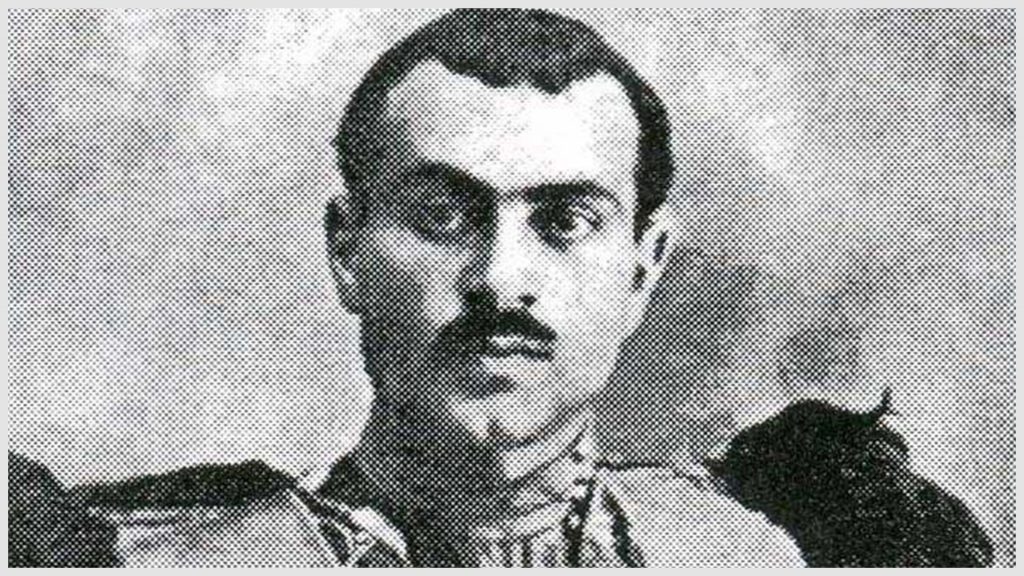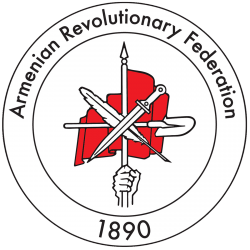Garegin Ter Haroutiunian - Nzhdeh
 01 January , 1886 -
21 December , 1955
01 January , 1886 -
21 December , 1955
Nzhdeh was born in the village of Kznout, in Nakhijevan, the youngest of four children. His father was the village priest. Nzhdeh received his early education at a Russian school in the city of Nakhijevan. He continued his education at the Tiflis Russian Gymnasium (high school), then attended St. Petersburg University. After two years of study at the Faculty of Law there, he returned to the Caucasus to join the Armenian national liberation movement against the Russian and the Ottoman Empires.
In 1906, Dashnaktsoutiun sent Nzhdeh to Bulgaria to attend military school. He graduated from the Sofia military academy in 1907. In 1908, he participated in the Iranian constitutional revolution alongside Rostom, Yeprem Khan, Mourad of Sepasdia, and other Armenian revolutionaries.
In 1909, Nzhdeh was arrested in the Caucasus by the Russian authorities and spent three years in prison but eventually managed to escape. In 1912, he joined Antranig’s Armenian battalion within the Macedonian-Adrianopolitan Volunteer Corps of the Bulgarian Army and fought against the Ottoman Empire in the Balkan wars, during which he was wounded.
Nzhdeh returned to the Caucasus in 1914–1915 to help in the formation of the Armenian volunteer regiments within the Russian army to fight against the Ottoman Empire. He was second in command to Dro, who commanded the Second Armenian Regiment. In 1916, Nzhdeh commanded a special Armenian-Yezidi military unit.
Nzhdeh played a key role in organizing the troops for the defense of Gharakilise in May 1918. After the declaration of the independent First Republic of Armenia, Nzhdeh was appointed governor of Nakhijevan. In August 1919, he was appointed commander of the Southern Corps of the Armenian army.
Following the Sovietization of Armenia in December 1920, the Bolsheviks proposed that Karabagh and Zangezour be granted to Soviet Azerbaijan. Nzhdeh, who vehemently opposed the idea, led the defense of Siunik region against the rising Bolshevik movement and declared Siunik’s autonomy.
After the February 1921 revolt against Soviet rule in Yerevan, the ARF controlled Yerevan and surrounding regions for some 42 days before being overwhelmed by numerically superior Red Army troops in April. The leaders of the rebellion then retreated into the Siunik region.
In April 1921, the independence of the self-governing region of Zangezour and surrounding areas was declared the Republic of Mountainous Armenia (Lernahayastani Hanrapetoutiun). Nzhdeh was proclaimed its prime minister and minister of defense.
After months of fierce battles with the Red Army, the Republic of Mountainous Armenia capitulated in July 1921, following Soviet Russia’s promises to keep the mountainous region a part of Armenia. Nzhdeh, his soldiers, and Armenian intellectuals, including leaders of the first Independent Republic of Armenia, crossed the Arax River into neighboring Iran. Soon thereafter, Nzhdeh returned to Sofia, Bulgaria, where he married a local Armenian woman and started a family.
Nzhdeh was involved in organizing the Armenian communities of Bulgaria, Romania, and the United States. In 1933, by decision of the ARF, Nzhdeh moved to the US to organize the youth. Assisted by Kopernik Tandourjian, Nzhdeh founded the Tseghagron movement, which soon became the Armenian Youth Federation (the ARF’s youth organization.)
In 1937, he returned to Bulgaria, where he published the Razmik Armenian newspaper and, along with a group of Armenian intellectuals in Sofia, founded the Taron Nationalist Movement and published its organ, the Taroni Artziv paper. He maintained close contacts with Macedonian Bulgarian revolutionary organizations.
During the Second World War, Nzhdeh attempted to gain the support of the Axis Powers (namely, Germany) as well as the Allied Powers (specifically, the Soviet Union) by proposing Armenian assistance in return for attacking Turkey. Convinced to travel to Moscow for talks, he was arrested and held in Lubyanka prison.
